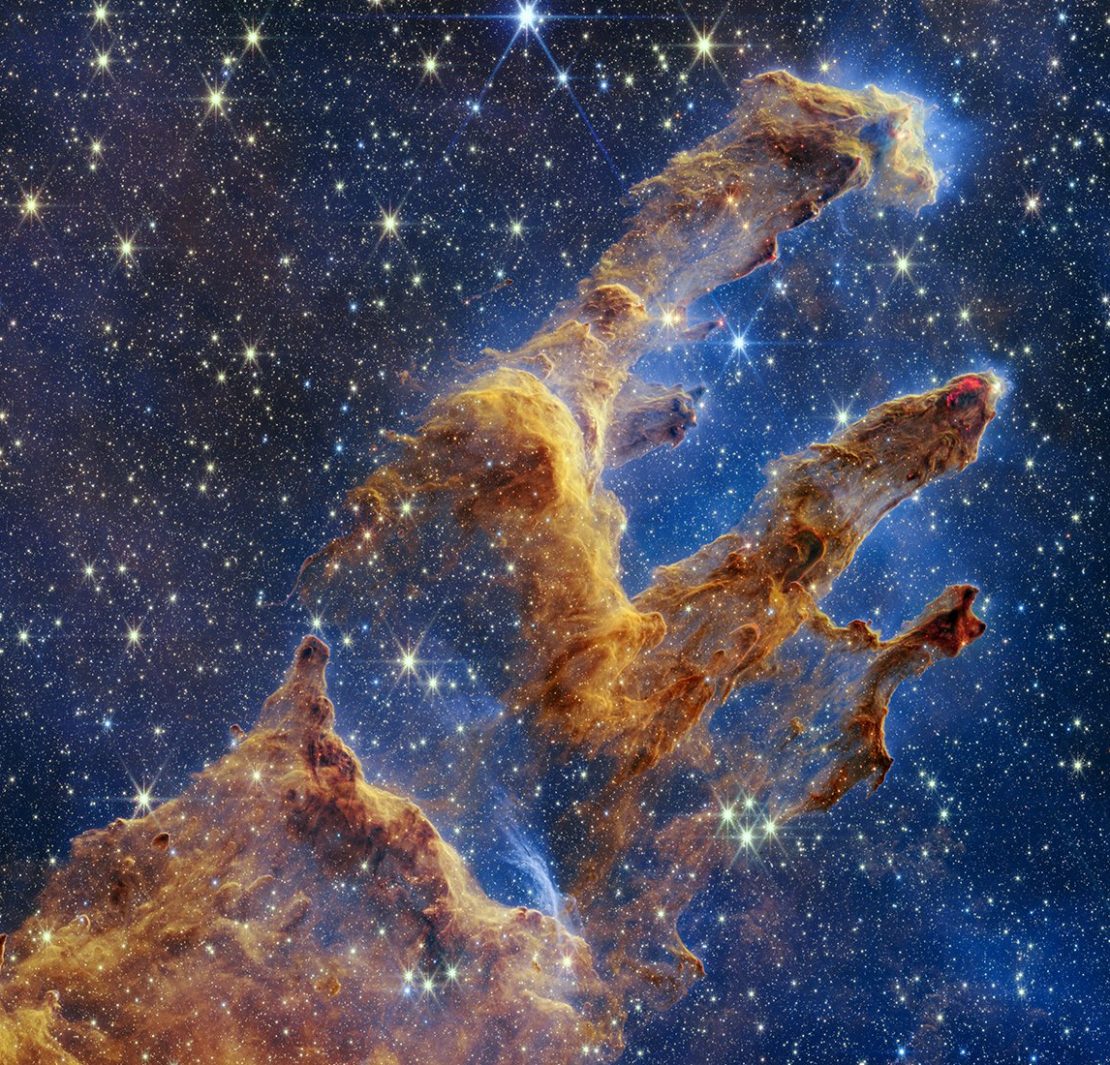NASA’s James Webb Telescope has taken a stunning new photo of the Pillars of Creation like we’ve never seen them before. The telescope’s Near-Infrared Camera (NIRCam) captured the image, which NASA then shared. The Pillars of Creation reside in the Eagle Nebula 6,500 light-years away from Earth. These iconic, majestic columns contain cool interstellar gas and dust. NASA’s Hubble Space Telescope first captured the phenomenon in 1995 and gave the photograph its name.
This is what you’ve waited for.
Journey with us through Webb’s breathtaking view of the Pillars of Creation, where scores of newly formed stars glisten like dewdrops among floating, translucent columns of gas and dust: https://t.co/5ea1kCzU5x
Here’s your guided tour ⬇️ pic.twitter.com/jFiDDrMUPl
— NASA Hallo-Webb Telescope 🕸🕷🎃 (@NASAWebb) October 19, 2022
With the help of the new image, researchers can now identify counts of newly formed stars and quantities of gas and dust in the area with greater precision. We can expect to develop a better idea of the process of star formation and bursting over millions of years.
NASA explained that bright red orbs with diffraction spikes that lie outside one of the pillars are newly formed stars. Knots with enough mass form inside the pillars and start to collapse under their own gravity. Then, they slowly heat up and become new stars. The name ‘Pillars of Creation’ is therefore a fitting one for these striking space formations.
NASA further revealed that the wavy lines one can see at the edge of the pillars are ejections from stars that are still in the process of formation. These young stars are typically only a few hundred thousand years old. They regularly eject supersonic jets, which crash against clouds of material like the pillars. Such activity may cause bow shocks, forming wavy patterns like those a boat creates when it moves through water.
The James Webb Telescope’s photos are taking social media by storm. Everyone from online space enthusiasts to celebrities are in awe of them. Much of outer space will go undiscovered in our lifetime – but photos like these make the vast, infinite cosmos seem both closer and more daunting at the same time.





